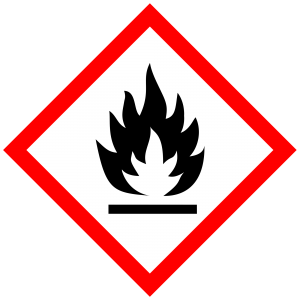 A fire code inspection is never announced beforehand.
A fire code inspection is never announced beforehand.
It can be the middle of the week and all you can think about it are your plans for the weekend and out of nowhere the local Fire Marshal shows up to take a look at what you have going on in your facility.
Yes, technically, you should be prepared for anything when it comes to fire code and the safety of your employees and patrons should be of your utmost concern, but even the best prepared often find they’ve overlooked many little details when a fire code inspection is done.
If you’ve let a few things slip, I won’t judge you, but you can be sure the Fire Marshall will.
That’s why today we’re going to take a look at some of the most common fire code inspection violations.
Common Fire Code Inspection Violations
- Exit Signs: All exit signs must be illuminated and in proper working condition.
- Exit Doors: Marked exit doors must be:
- Unblocked: Ensure that boxes or merchandise are not in the way of an exit path.
- Closed at Doors and Stairways: Keep doors to hallways and stairways closed; this prevents smoke and fire from entering escape routes.
- Exiting Hardware & Security: Marked exits must be able to be opened in one motion. Inside keyed locks (as shown in the picture above) are prohibited.
- Smoke Detectors: All smoke detectors must have charged batteries and be in proper working condition.
- Fire Alarms: Many counties will require that fire alarms be tested on a regular (often weekly) basis with a written record of the tests kept.
- Fire Extinguishers: Extinguishers should have annual maintenance and inspection.
- Storage of Flammable Materials: There are limitations to the kind of flammable materials that may be stored, their quantities, and their locations. Contact your building inspector to find out the specific regulations for your area.
- Pressurized Cylinders: All pressurized cylinders must be secured from falling.
- Proper Storage:
- Exit routes and exit signs must remain unblocked.
- Combustibles cannot be stored under stairways as this is a detrimental place for a fire to starts.
- Trash should be removed every 24 hours as this is a common place for fire to start.
- In many areas, sprinkler heads must have a clearance of 18” from any materials, and buildings without sprinklers must have a 24” clearance to the ceiling.
- Rated Enclosures: Any rated enclosures (examples: doors, furnaces, water heaters, wires, etc), must not have any holes in them.
- Vent Pipes: Vent pipes need to be inspected and repaired if there are any cracks or loose seals. This prevents harmful gases like carbon monoxide from entering the building.
- Extension Cords: Any device that is permanently mounted cannot have an extension cord on it.
- Open Electrical Panels: Keep these closed at all times to avoid molten metal from flying across the room should there be a hot enough short.
How to Rectify the Problem
If you do take a hit for any of the above violations, most of them are easily rectified.
If you want to avoid getting a deduction on your score in the first place take a few minutes each month to run through the list above. You can mark things off as you go and if you do run into any of the problems listed above, most of them are a simple fix.
If it’s been awhile since your last fire code inspection, it’s probably a safe bet to think that they’re coming to look at your store again soon—so taking the time on the front-end to fix any potential issues will be well worth the time and stress you save if they come to check when you are unprepared. Do you want to go more in depth when it comes to your fire code inspection? If that’s the case, we have several experts on hand who can really get into the nitty gritty details of what a true fire code inspection entails. If you have questions, you can give us a call and we’ll be happy to help you out!
